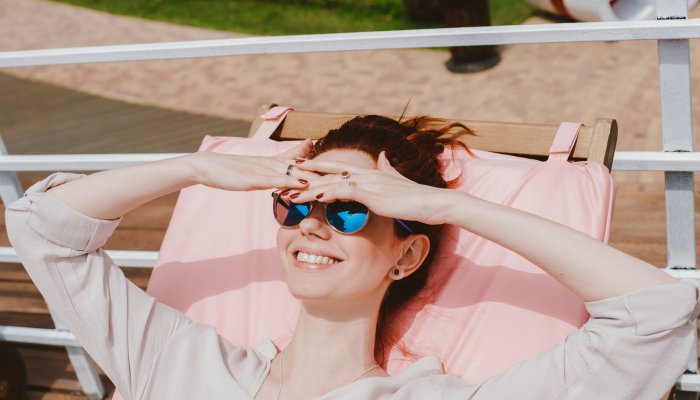

“Butyloctyl salicylate is a synthetic ingredient that helps improve the aesthetics and performance of sunscreen products,” says cosmetic chemist Ron Robinson, founder of BeautyStat. “It does so by helping to solubilize and stabilize sunscreen active ingredients, as well as provide emollience. It also has UV absorption capabilities in its own right, which may help further boost the SPF level of the product.”
That’s why some refer to it as an “SPF booster.” It helps stabilize the sunscreen, improve its look and feel, and boost its UV-absorbing power. It does the latter by absorbing UV light and triggering a chemical reaction, which then transforms the UV into heat.
If that all sounds very familiar to chemical sunscreen filters—as opposed to physical filters, which create a barrier to shield the vulnerable skin below—well, that’s because they are pretty much the same thing. In fact, butyloctyl salicylate “is very similar in chemical structure to octisalate, which is an approved sunscreen active in the U.S. and many other countries,” says product developer Emily Philen, senior manager of scientific affairs at Murad.
“The official name for octisalate is ethylhexyl salicylate which, as you can tell from the name, is butyloctyl salicylate’s relative,” writes cosmetic chemist Michelle Wong, Ph.D., on her website, Lab Muffin Beauty Science. And the “salicylate” portion is the component that actually absorbs the UV light, which is the same in both molecules. “The bit that’s different doesn’t actually interact with UV at all,” she adds.
So why isn’t it considered an SPF active, you might ask? Well, sunscreen actives must go through a very long and arduous process to become regulated by the FDA. I highly suggest reading Wong’s full post, which dives deeper into the ins and outs of sunscreen regulation. But the gist is that there’s a lot of legal red tape, and for some reason butyloctyl salicylate hasn’t been registered yet.








